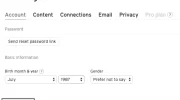Image Source: wallpaperflare.com
In today’s rapidly evolving technological landscape, businesses face a significant challenge in finding and retaining skilled IT professionals. The shortage of qualified talent often hinders the progress of projects and inhibits growth opportunities. To address this talent gap, many organizations turn to IT body leasing services, leveraging external expertise to fill their technical staffing needs. This article explores the role of body leasing in bridging the talent gap in the tech industry, with a focus on the keywords “IT body leasing service” and “Django websites examples.” We will also touch upon the importance of technical documentation for software development.
IT body leasing service, also known as staff augmentation or staff leasing, refers to the practice of hiring skilled IT professionals from external agencies or service providers. These professionals, known as “body leasers” or “leased staff,” work on-site or remotely for the client organization, seamlessly integrating with their existing teams. This approach offers several advantages for businesses looking to bridge the talent gap:
Access to Specialized Skills: IT body leasing services provide access to a diverse pool of IT professionals with specialized skills and expertise. Whether it’s web development, data analysis, cybersecurity, or other technical domains, organizations can find professionals with the exact skill set required for their projects.
Flexibility and Scalability: With IT body leasing, businesses have the flexibility to scale their teams up or down based on project requirements. They can quickly augment their workforce during peak periods or when specific expertise is needed, without the long-term commitment associated with traditional hiring.
Cost Efficiency: Body leasing can be a cost-effective solution compared to hiring full-time employees. Organizations can avoid expenses like recruitment, training, benefits, and overhead costs associated with in-house staff. Instead, they pay for the services rendered by the leased professionals on a contractual basis.
Faster Time-to-Market: By leveraging IT body leasing services, businesses can accelerate their project timelines. With access to experienced professionals, they can quickly ramp up development efforts, meet deadlines, and seize market opportunities without delays caused by talent shortages.
Now, let’s take a look at some Django websites examples to illustrate the practical application of IT body leasing services:
Instagram: This popular social media platform was built using Django, showcasing its scalability and robustness. Instagram leveraged Django’s features and flexibility to handle massive user bases, complex data structures, and seamless user interactions.
Pinterest: Pinterest, a visual discovery platform, relies on Django’s versatility to provide a smooth and intuitive user experience. Django’s object-relational mapping and templating system enabled Pinterest to organize and display a vast collection of user-generated content.
Spotify: The world’s leading audio streaming platform, Spotify, utilizes Django to power various aspects of its service, including user authentication, playlist management, and content recommendations. Django’s security features and extensibility make it a reliable choice for handling user data and delivering personalized experiences.
Technical document for software development plays a crucial role in software development projects, including those involving IT body leasing. It serves as a comprehensive reference for developers, stakeholders, and future maintainers of the software. Some key points to consider regarding technical documentation include:
Clear Project Requirements: Documenting precise project requirements helps align the leased professionals with the client organization’s expectations. This includes detailing the functionality, user interfaces, performance goals, and other critical aspects of the software.
System Architecture: Technical documentation should outline the system architecture, including the high-level design, components, and their interactions. It helps developers understand the underlying structure and make informed decisions during development.
API Documentation: If the software involves an application programming interface (API), providing detailed API documentation is essential. This documentation should cover the endpoints, request and response formats, authentication methods, and any specific guidelines for integration.
Code Documentation: Leased professionals should follow best practices for code documentation to ensure clarity and maintainability. This includes documenting functions, classes, modules, and any relevant code comments that aid in understanding the codebase.
User Manuals and Guides: If the software targets end-users, documenting user manuals and guides is crucial for adoption and smooth user experiences. These resources should provide step-by-step instructions, troubleshooting tips, and any necessary contextual information.
In summary, IT body leasing services play a significant role in bridging the talent gap in the tech industry. By leveraging external expertise, businesses can access specialized skills, enjoy flexibility, control costs, and expedite project timelines. Django websites like Instagram, Pinterest, and Spotify demonstrate the practical application of Django’s capabilities in building scalable and feature-rich platforms. Furthermore, technical documentation, encompassing project requirements, system architecture, API specifications, code documentation, and user manuals, ensures clear communication and supports efficient software development and maintenance processes.









